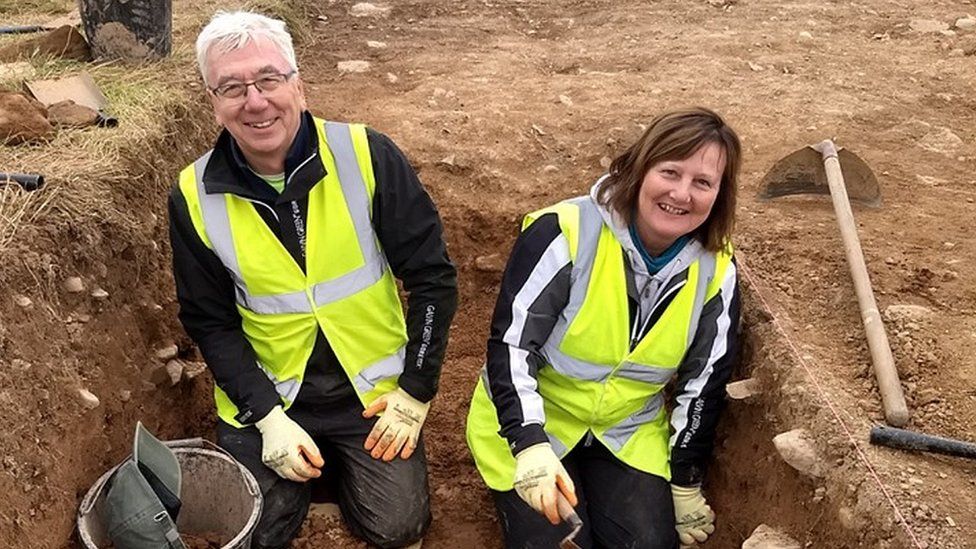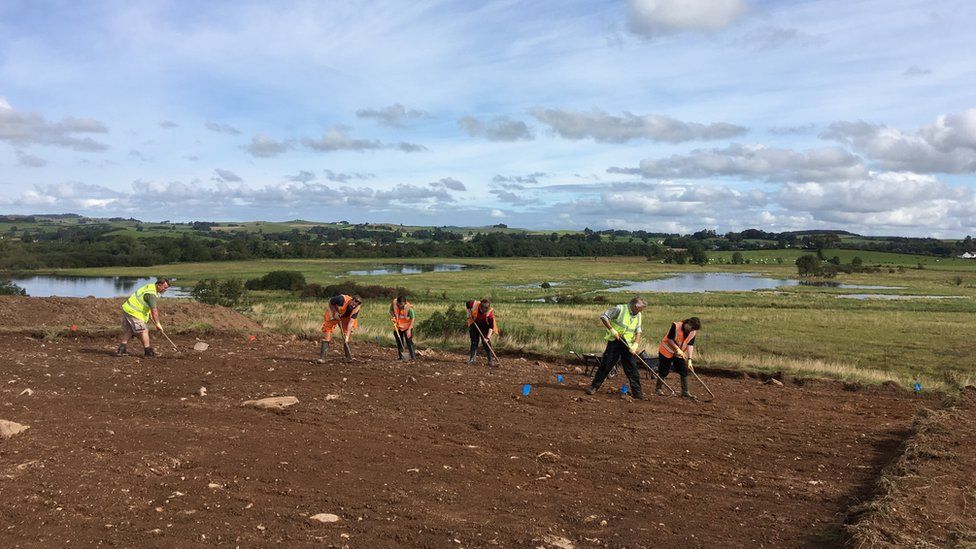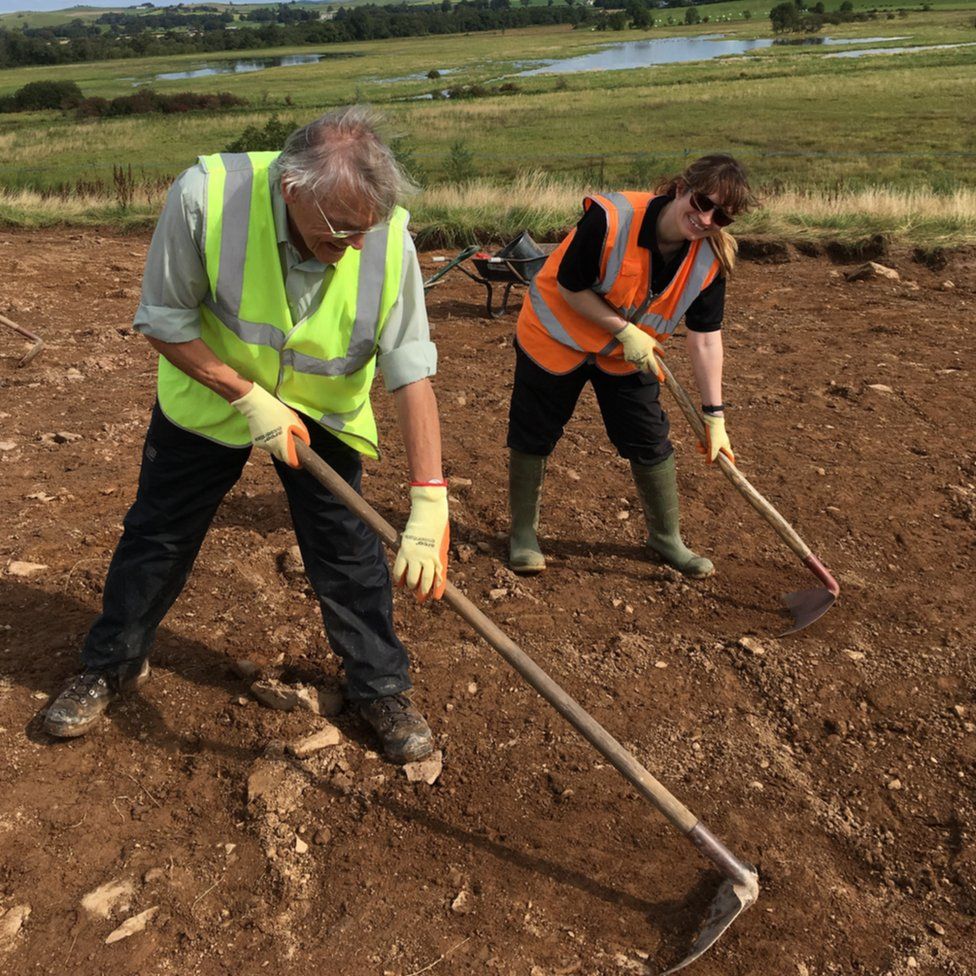Hazelnut find sheds light on Threave estate's history
BBC News8 March 2021

Amateur archaeologists have unearthed evidence of human activity on a Scottish estate about 10,000 years ago.
A tiny burnt hazelnut shell found on the Threave Estate near Castle Douglas has been radiocarbon dated back to the Mesolithic period.
It was discovered during the Galloway Glens' Can You Dig It project at the site in the summer of 2019.
Derek Alexander, head of archaeology for the National Trust for Scotland, said the find was "really exciting".
Little Wood Hill - situated on the estate - has long been known as a "significant" archaeological site.

The remains of a D-shaped enclosure on top of the hill were first recognised on aerial photographs taken in the late 1940s.
Work carried out under the supervision of Mr Alexander in 2014 revealed it dated back to the Iron Age.
However, the Can You Dig It dig appears to have found proof of human activity on the site at a much earlier date.
The burnt hazelnut shell - after being sent to the Scottish Universities Environmental Research Centre (SUERC) - has been dated to between 8,547 and 8,312 BC.
Discovered on prehistoric sites across the country, hazelnuts have long been established as a favourite snack of the Mesolithic people.
Mr Alexander said: "Over the years we have gradually built up an understanding of past human activity at Threave throughout prehistory and history.
"This radiocarbon date for Mesolithic activity is really exciting, as it is the first evidence we have from this time and is the earliest date recovered at Threave so far."

Claire Williamson, of Rathmell Archaeology, who is delivering Can You Dig It for the Galloway Glens community project said the small indication of Mesolithic life on the estate was "amazing".
Helen Keron, the Galloway Glens education and community engagement officer, said the importance of the find was clear.
"They show the unbroken line from our modern society right back to the very beginnings of human residence in Galloway," she said.
"Even the tiniest traces give us an insight into how life was for our ancestors, and that's a big part of what Can You Dig It is all about."

Hazelnut find sheds light on Threave estate's history
Amateur archaeologists unearth a shell dating back to around 8,500BC at a site in the south of Scotland.
www.bbc.co.uk